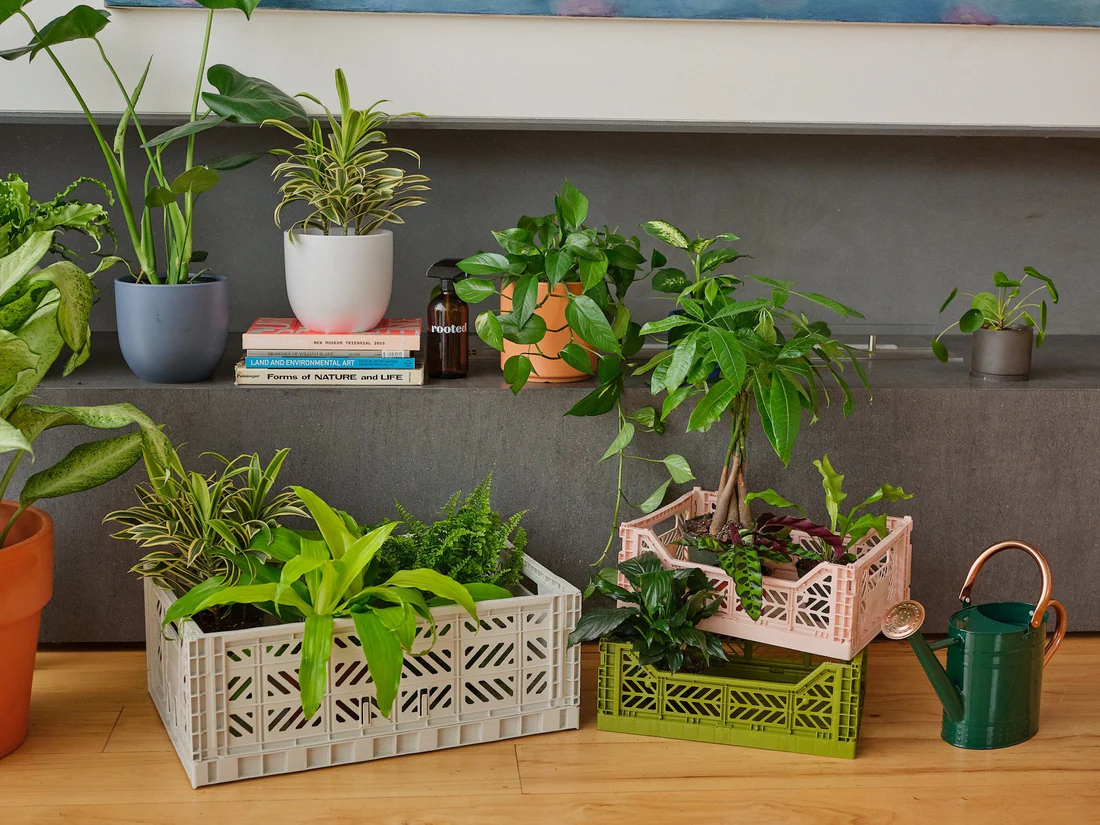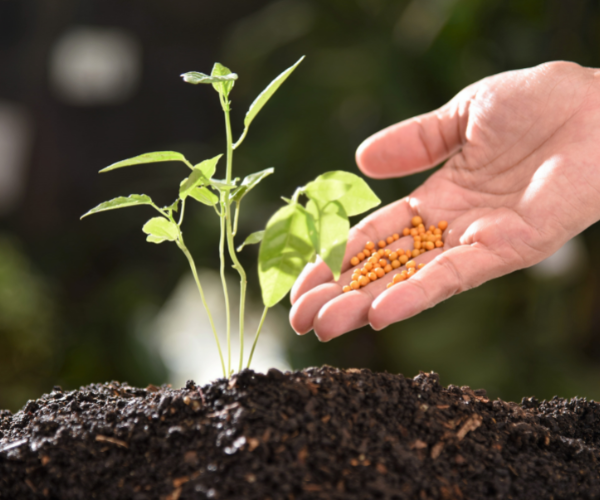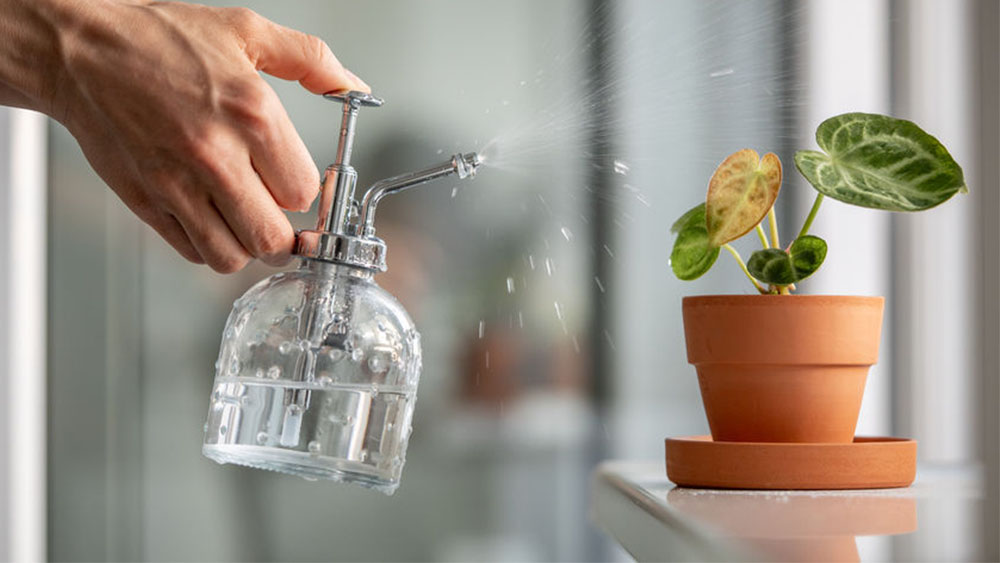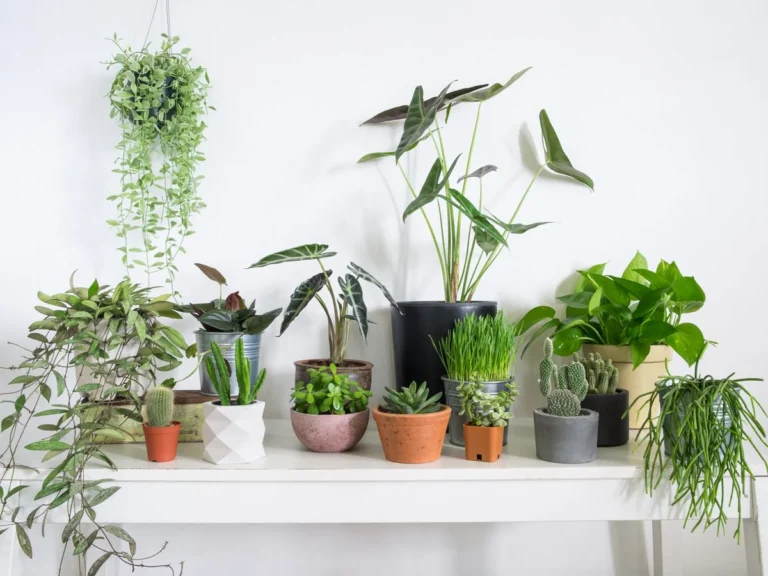Contents
Introduction
Thinking about adding some greenery to your indoor space? Choosing the right plants can make all the difference in your indoor gardening journey. Whether you’re a complete newbie or just looking to spruce up your home with a few plants, getting it right from the start is key to success.
Indoor plants aren’t just about making your space look pretty—they come with a bunch of benefits too! They can improve air quality, boost your mood, and even help you feel more relaxed. But before you dive into the world of houseplants, it’s important to choose the right ones for your home.
Let’s face it: Not everyone has a green thumb. Some of us can barely keep a cactus alive, let alone manage a mini jungle. That’s why picking the right plants that fit your living conditions and lifestyle is crucial. You don’t need to be an expert or spend hours researching—just follow some simple guidelines to find plants that are easy to care for and will thrive in your home.
In this guide, we’ll walk you through everything you need to know about choosing your first indoor plants. We’ll cover what to look for based on your space and lighting, how to keep your plants happy and healthy, and even some common mistakes to avoid. So grab a cup of coffee, sit back, and get ready to become a plant parent with confidence!
Assessing Your Indoor Environment
Before you start picking out plants, let’s take a moment to figure out what your indoor environment is like. Knowing a bit about your home’s conditions will help you choose plants that are not only beautiful but also suited to your space. Don’t worry; this isn’t rocket science!

Light Conditions
First up, light. Plants need light to grow, but different plants have different light preferences. Think of it like choosing a room for a party—some plants love a sunny spot (like a sunny windowsill), while others are perfectly happy in shadier corners.
To get a handle on your light situation, check how much natural light each room gets. Is it bright and sunny, or more on the dim side? You can even use a simple trick: place a piece of white paper near the spot where you want to put your plants and see how much light it gets throughout the day. This will give you a good idea of whether it’s a “bright light,” “medium light,” or “low light” spot.
Temperature and Humidity
Next, let’s talk temperature and humidity. Most indoor plants prefer a comfortable, stable temperature. Ideally, keep your plants in a spot where temperatures range from 60 to 75 degrees Fahrenheit. Avoid placing them near drafty windows or heating vents, which can cause sudden temperature changes.
Humidity is another factor. Plants like a bit of moisture in the air, but most common houseplants are pretty forgiving. If you’re in a very dry climate or using a lot of air conditioning or heating, you might need to add some humidity. This can be as simple as misting your plants occasionally or placing a small humidifier nearby.
Space and Placement
Finally, think about space and placement. How much room do you have for your new plant friends? If you’re short on space, consider plants that don’t grow too large or that can be hung up or placed on shelves. Measure the area where you plan to put your plants to ensure you have enough room for them to grow and thrive.
Consider how the plant’s size and growth habit fit into your space. Some plants grow tall and need vertical room, while others spread out and need horizontal space. You want to make sure your plants have enough room to grow without overcrowding your space.
By getting a good handle on your indoor environment, you’ll be well on your way to choosing plants that not only look great but also thrive in your home. So take a quick look around your space, and let’s move on to picking the perfect plants!
Choosing the Right Plants
Alright, you’ve got a good grasp on your indoor environment, so now it’s time to pick out some plants! Choosing the right plants is a bit like finding the perfect pair of shoes—you want something that fits well and suits your style. Let’s break down the best plant choices based on the light conditions you have and how much effort you’re ready to put into plant care.
Low Light Plants
If your space isn’t bathed in sunlight, don’t worry! There are plenty of plants that thrive in low light conditions. These are perfect for those cozy corners that don’t see much direct sunlight. Think of plants like the Snake Plant, Pothos, and ZZ Plant. They’re great because they’re low-maintenance and can handle those shadier spots.
Just remember, even low light plants need some light, so don’t tuck them away in the darkest corner of your home. A spot with indirect or filtered light will keep them happy and healthy.
Medium Light Plants
Got a bit more light but still not a sun-drenched room? Medium light plants might be just what you need. These plants are super versatile and can do well in bright, indirect light. Consider adding a Spider Plant, Peace Lily, or Philodendron to your collection. They’re not only lovely to look at but also pretty easy to care for.
Medium light plants usually need a bit more attention than their low light counterparts, but they’re still quite forgiving. Just make sure they’re not sitting in direct sunlight for too long, as that can be too intense for them.
Bright Light Plants
If you’re lucky enough to have a spot with plenty of bright, direct sunlight, you can go for plants that absolutely thrive in those conditions. Succulents, Aloe Vera, and Fiddle Leaf Fig are perfect for bright spots. They love soaking up the sun and can handle the extra brightness.
These plants typically need more frequent watering and a bit more care, but they’ll reward you with vibrant growth and stunning looks. Make sure to rotate them occasionally so they grow evenly and don’t get too lopsided.
Choosing Plants Based on Your Lifestyle
While light is a big factor, it’s also important to consider how much time you can realistically spend on plant care. Some plants are pretty low-maintenance and will be happy with just a little attention now and then. Others might need more frequent watering, pruning, or special care.
For a low-maintenance option, try plants like the Snake Plant or Pothos. If you’re up for a bit more commitment, consider plants like the Peace Lily or Fiddle Leaf Fig.
In short, choose plants that match not just the lighting in your home, but also your lifestyle and level of commitment. This way, you’ll have plants that not only look great but also fit seamlessly into your daily routine.
Plant Care Basics
Congratulations on picking out your plants! Now, let’s dive into the basics of plant care to make sure your new green friends stay happy and healthy. Think of this as your plant care cheat sheet—easy tips to keep your plants looking their best without a lot of fuss.
Watering
Watering is one of the most important things you’ll need to get right. It’s kind of like feeding your plants; too much or too little can both cause problems. Here’s a simple way to figure out when to water:
- Check the Soil: Stick your finger about an inch into the soil. If it feels dry, it’s time to water. If it’s still moist, hold off for a bit longer.
- Signs of Overwatering: Yellowing leaves or soggy soil can mean you’re giving your plant too much water. Make sure your pots have good drainage to prevent water from pooling at the bottom.
- Signs of Underwatering: Wilting or brown, crispy leaves often mean your plant needs a drink. Water until you see it coming out of the drainage holes.
Every plant has its own watering needs, so it’s good to check specific care instructions for each type. But generally, it’s better to water less often than to overdo it.
Soil and Fertilizing
Choosing the right soil is like picking the perfect bed for your plant. Different plants need different types of soil, but most houseplants do well in a basic potting mix. Some plants, like succulents, might need a special mix that drains well.

- Soil Mix: For most indoor plants, a standard potting mix is fine. If you’re growing succulents or cacti, look for a mix designed specifically for them.
- Fertilizing: Plants need nutrients to grow, but they don’t need them all the time. A general-purpose liquid fertilizer works well for most houseplants. Fertilize about once a month during the growing season (spring and summer) and reduce or stop during the winter when many plants go dormant.
Pots and Containers
Your plant’s pot is more important than you might think. It’s not just about looks; it’s about making sure your plant has the right environment to grow.
- Drainage: Good drainage is crucial. Make sure your pots have holes at the bottom so excess water can escape. This helps prevent root rot and keeps your plant’s roots healthy.
- Pot Size: Choose a pot that’s just a bit bigger than the plant’s current root system. If it’s too large, the soil can stay too wet and cause root problems. If it’s too small, your plant might outgrow it quickly and need repotting sooner.
Additional Care Tips
- Dusting Leaves: Wipe your plant’s leaves with a damp cloth occasionally to keep them dust-free and able to breathe properly.
- Pruning: Trim off any dead or yellowing leaves to encourage new growth and keep your plant looking its best.
By keeping up with these basic care tips, you’ll be on your way to having a thriving indoor garden. Remember, each plant has its own needs, so check the specific care requirements for your new green friends. With a little attention and love, your indoor plants will flourish!
Common Mistakes and How to Avoid Them
As you start your indoor gardening journey, it’s easy to make a few missteps along the way. But don’t worry—learning from common mistakes can help you become a plant pro in no time. Here’s a guide to the most frequent pitfalls and how to avoid them, so you can keep your plants happy and thriving.
Overwatering vs. Underwatering
One of the biggest mistakes new plant parents make is getting the watering balance wrong. It’s a bit like cooking—you need the right amount of ingredients to make a great dish.

- Overwatering: This happens when you give your plants too much water. Symptoms include yellowing leaves, a musty smell from the soil, or even mold. To avoid this, make sure your pots have drainage holes and check the soil moisture before watering. If the top inch of soil is still moist, hold off on watering.
- Underwatering: If your plant’s leaves are wilting or turning brown and crispy, it might be a sign that it needs more water. Make a habit of checking the soil regularly and adjust your watering schedule based on the plant’s needs and your home’s environment.
Wrong Light Conditions
Plants are like us—they thrive in the right conditions. Placing a plant in the wrong light can lead to poor growth or even death.
- Too Much Direct Sunlight: Some plants, like succulents, love bright light, but others might get scorched if exposed to too much direct sunlight. If you notice browning or scorched leaves, try moving your plant to a spot with indirect light.
- Too Little Light: On the flip side, plants that need more light can become leggy or lose their vibrant color if they’re in too shady a spot. Make sure you understand the light requirements of your plants and place them accordingly. If natural light is limited, consider using grow lights to supplement.
Neglecting Plant Needs
Plants aren’t like pets that demand constant attention, but they do need some regular care. Neglecting basic needs can lead to problems down the line.
- Ignoring Pest Problems: Keep an eye out for pests like spider mites, aphids, or mealybugs. If you see tiny critters or spots on the leaves, act quickly to treat the infestation. A quick rinse with water or an insecticidal soap can help.
- Skipping Regular Maintenance: Plants need occasional pruning to stay healthy. Remove dead or yellowing leaves, and trim back overgrown areas to encourage new growth. Regular maintenance helps your plant stay robust and attractive.
General Tips to Avoid Mistakes
- Do Your Research: Before bringing a plant home, check its specific care requirements. Different plants have different needs, so a bit of research can go a long way.
- Monitor Your Plants: Keep an eye on how your plants are doing. If you notice any changes, adjust your care routine accordingly. Plants are pretty good at letting you know what they need if you pay attention.
By being aware of these common mistakes and how to avoid them, you’ll be well on your way to creating a thriving indoor garden. Remember, every plant is a bit different, so stay curious and keep learning as you grow your collection!
Practical Tips for Beginners
Starting your indoor garden can be a bit overwhelming, but with a few practical tips, you’ll find it’s easier than you think. Whether you’re just starting out or looking to refresh your plant care routine, these beginner-friendly tips will help you grow your green thumb with confidence.
Start Small and Simple
If you’re new to indoor plants, it’s best to begin with a few easy-to-care-for varieties. Think of it like starting a new hobby—you wouldn’t dive into a complex project right away. Begin with plants that are forgiving and low-maintenance.
- Beginner-Friendly Plants: Try starting with plants like the Snake Plant, Pothos, or Spider Plant. These are hardy, adaptable, and don’t require a lot of fuss. They’re perfect for learning the basics of plant care without getting overwhelmed.
- Gradual Expansion: As you get more comfortable with your plant care routine, you can start experimenting with more diverse or demanding plants. Take it step-by-step and build your confidence over time.
Use Plant Care Apps and Tools
In today’s tech-savvy world, there are plenty of tools to help you manage your indoor garden. Plant care apps and gadgets can make your life easier and your plants happier.
- Plant Care Apps: Apps like Planta or Bloom & Grow provide reminders for watering, tips for plant care, and even help with identifying plant problems. They’re like having a plant care expert in your pocket.
- Helpful Tools: Consider investing in a moisture meter to check soil moisture levels or a small grow light if natural light is limited. These tools can take the guesswork out of plant care and help ensure your plants get exactly what they need.
Join Plant Communities
Getting involved in plant communities can be incredibly helpful and fun. Whether you’re looking for advice, inspiration, or just want to share your plant journey, there’s a whole world of plant enthusiasts out there.
- Online Forums and Groups: Join online plant communities or forums where you can ask questions, share photos, and get tips from experienced plant lovers. Websites like Reddit’s r/houseplants or Facebook plant groups are great places to start.
- Local Plant Clubs and Events: Check out local plant clubs or workshops in your area. Many cities have plant swaps, gardening clubs, or educational events where you can learn more and connect with other plant enthusiasts.
Keep Learning and Stay Curious
The world of indoor plants is vast and exciting. There’s always something new to learn, whether it’s about a new plant species, advanced care techniques, or creative ways to display your plants.
- Read and Research: Pick up a few plant care books or follow blogs dedicated to indoor gardening. This will keep you informed about plant care tips and trends.
- Experiment: Don’t be afraid to try new things. Experiment with different plants, care routines, or decorative ideas. It’s all part of the fun!
By starting small, using helpful tools, joining plant communities, and staying curious, you’ll set yourself up for success as a beginner plant parent. Enjoy the journey of growing and caring for your indoor plants—you might find it’s more rewarding than you ever imagined!
Resources for Further Learning
Feeling excited about your indoor gardening journey? That’s awesome! To help you continue growing your plant knowledge and skills, there are tons of great resources out there. Whether you love flipping through books, browsing the web, or chatting with fellow plant enthusiasts, you’ve got plenty of options to explore.
Books and Guides
Books are a fantastic way to dive deeper into plant care and gain a broader understanding of indoor gardening. They offer in-depth information and practical tips that can enhance your plant care routine.
- Recommended Books: Look for titles like “The House Plant Expert” by Dr. D.G. Hessayon or “How Not to Kill Your Houseplant” by Veronica Peerless. These books are filled with useful advice, plant profiles, and troubleshooting tips that are perfect for beginners.
- Guides and Manuals: Many books also come with easy-to-follow care guides and plant profiles. They can help you identify and understand the needs of different plants, making it simpler to provide the right care.
Online Resources
The internet is bursting with valuable information for plant lovers. From blogs and websites to YouTube channels and online courses, you can find tons of resources to help you become a plant pro.
- Websites and Blogs: Check out popular gardening websites like The Spruce or Gardening Know How for articles and tips. Blogs such as Apartment Therapy and The Plant Lover’s Journal also offer great advice and inspiration for indoor gardeners.
- YouTube Channels: For visual learners, YouTube is a treasure trove of plant care videos. Channels like “Plant Life” or “Garden Answer” provide easy-to-follow tutorials and plant care tips that you can watch and learn from.
Local Nurseries and Workshops
Sometimes, the best way to learn is in person. Local nurseries and plant shops often host workshops, classes, or events that can help you expand your plant knowledge and skills.
- Visit Local Nurseries: Many nurseries offer free or low-cost workshops on plant care, propagation, and more. It’s a great opportunity to learn directly from experts and ask questions.
- Attend Workshops and Events: Look for gardening events or plant swaps in your area. These gatherings are perfect for meeting fellow plant enthusiasts, picking up new tips, and finding inspiration for your indoor garden.
By tapping into these resources, you’ll have everything you need to deepen your plant knowledge and become a more confident indoor gardener. Keep exploring, learning, and growing your skills, and you’ll be well on your way to creating a vibrant and thriving indoor garden!
Conclusion
Congratulations! You’re now well-equipped to start your indoor gardening adventure. By following these tips and guidelines, you’ll be on your way to creating a lush, vibrant indoor garden that brings joy and freshness to your home.
Remember, the key to successful indoor gardening is finding plants that match your home environment and your lifestyle. Start with easy-to-care-for varieties, pay attention to their light and watering needs, and don’t be afraid to make adjustments along the way.
Indoor gardening is as much about learning and experimenting as it is about nurturing plants. Don’t get discouraged if things don’t go perfectly at first. Every plant parent makes mistakes—what’s important is that you keep learning and growing from those experiences.
Keep exploring new plants, experimenting with different care techniques, and connecting with other plant lovers. The more you dive into the world of indoor gardening, the more rewarding it will become. Your plants will not only thrive, but they’ll also bring a touch of nature and beauty into your everyday life.
So go ahead—grab those pots, pick out your favorite plants, and start creating your indoor oasis. Happy planting!



